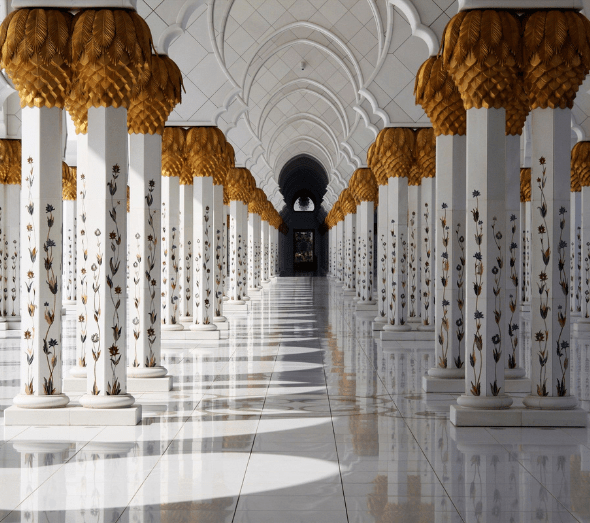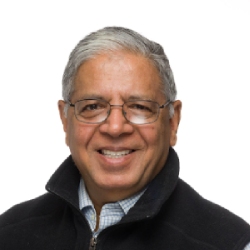Sacred Spaces and Why They Matter in Spiritual Practice
Key Points:
Sacred places and objects are important in many religions. They can help people connect with something larger than themselves, find peace and tranquility, and feel a sense of belonging.
When we enter a sacred place, such as a church, temple, or mosque, we often feel a sense of awe and reverence. This is because these places are seen as being set apart from the everyday world. They are places where we can connect with something larger than ourselves, such as God or the divine.
Spiritual Symbolism and the Power of Sacred Objects
The power of sacred places and objects lies in what they symbolize. They are icons that help us to simplify abstract concepts and redirect our focus toward something beyond. When we see a cross, we are reminded of the sacrifice of Jesus Christ. When we see a Torah scroll, we are reminded of the word of God.
The faith and belief that these objects can help us gain spiritual benefits also plays a role in their power. When we believe that a sacred object can help us to connect with God or the divine, it can be a powerful source of comfort and strength.
So often, you enter a church or a monastery or even a spot by the river where there might be fluttering prayer flags or a simple stone idol, and something inside you becomes quiet. It’s almost as if the aura of the space automatically sparks surrender, elicits prayer. It is a space quite distinct from other mundane spaces.
Sacred Spaces as Catalysts for Spiritual Growth and Maturity
In all three of the Abrahamic traditions, Jerusalem is a sacred place. Mecca and Medina are also highly revered as holy cities in Islam and a pilgrimage to these places is coveted by all Muslims. In India, “Char Dham”, a set of four holy sites considered to be heavenly abodes are visited by devout Hindus desirous of achieving salvation.
Sacred places such as the Temples, synagogues, churches, and mosques are like the localized proxies of holy sites. Within such houses of worship lie sacred objects. In a synagogue, you will find the Torah Scrolls; in churches, there is always some iconography depicting Christ on the cross; Islamic mosques are decorated with Arabic calligraphy emphasizing Qur’an as the living word of God.
Spiritual Disciplines and the Role of Sacred Places in Development
Hindu temples contain elaborate statues from the pantheon of Gods and we often see objects such as conch shells, holy basil plants, and rudraksha beads used in worship rituals. Even the Ganges River is imbued with divine energy by people. For Buddhists, the Bodhi tree, the Dharma wheel, and the Stupa are sacred and often depicted in their art and scriptures. Christians consider sacraments as physical objects representing blessings and grace.
Almost all religions mark boundaries to create a separation between the sacred and the secular. Sacred spaces and objects are effective in allowing us to experience the transcendent through material means. They are icons that help us simplify abstract concepts to redirect our focus toward something beyond. Their power lies in what they symbolize, supported by the faith and belief that they can help us gain spiritual benefits.
Sacred Sites Across Religions: Icons of Spiritual Energy
Christianity
“[Jesus] went out, bearing His own cross, to the place called the Place of a Skull, which is called in Hebrew, Golgotha.”
–The New Testament (John 19:17), Christian text
Islam
“[The Ka’ba was] the first House [of worship] established for mankind.”
—The Qur’an (3:96)), Muslim text

Baha’i
“In brief, the original purpose of temples and houses of worship is simply that of unity — places of meeting where various peoples, different races and souls of every capacity may come together in order that love and agreement should be manifest between them.”
—‘Abdu’l-Bahá, Baha’i leader
Hinduism
“Pre-eminent among all sacred fords, the best of places, superior to all knowledge, this is my place, the supreme Avimukta. Within this area are to be found sanctuaries, purifying fords, and shrines in cremation grounds surpassing those in other divine spots on earth.”
—Kurma Purana, Hindu text
Buddhism
“With the right attitude, any journey to a sacred place becomes a pilgrimage. In our tradition, the Buddha advised that in times to come people interested in his teachings should be told about the places associated with the major events of his life. His purpose was not to ensure the aggrandizement of the person of the Buddha, but rather the welfare of his followers.”
–The Dalai Lama
Christianity
“This new life is spread not only by purely mental acts like belief, but by bodily acts like baptism and Holy Communion. It is not merely the spreading of an idea; it is more like evolution — a biological or super-biological fact.”
—C.S. Lewis, writer and Christian theologian
Islam
“We have appointed acts of devotion for every community to observe.”
—Qur’an (22:67-69), Islamic text
Confucianism
“To return to the observance of the rites through overcoming the self constitutes benevolence.”
—The Analects (12:1), Confucian text
Hinduism
“Actions based upon sacrifice, charity, and penance should never be abandoned; they must certainly be performed. Indeed, acts of sacrifice, charity, and penance are purifying even for those who are wise.”
—The Bhagavad Gita (18:5-6), Hindu text
Buddhism
“Not by rituals, and resolutions, nor by much learning, nor by celibacy, nor even by meditation can you find the supreme, immortal joy of nirvana until you extinguish your self-will.”
—The Buddha
Daoism
“Higher ritual involves effort
And should it meet with no response
Then it threatens and compels”
—Tao Te Ching, Daoist text
Popular Reads
Fire as a Symbol| Religious Wear| False Narrative| The Charioteer| The Cosmic Tree| Sacred Words| Sacred Music| Allegory of the Cave| The Great Flood| Creation Story| Hippocratic Oath| Fasting and Religion| Spiritual Transcendence| Religious Texts| Divine Justice| Belief in a Higher Power
For more reflections on personal growth, wisdom and happiness, browse through our website


